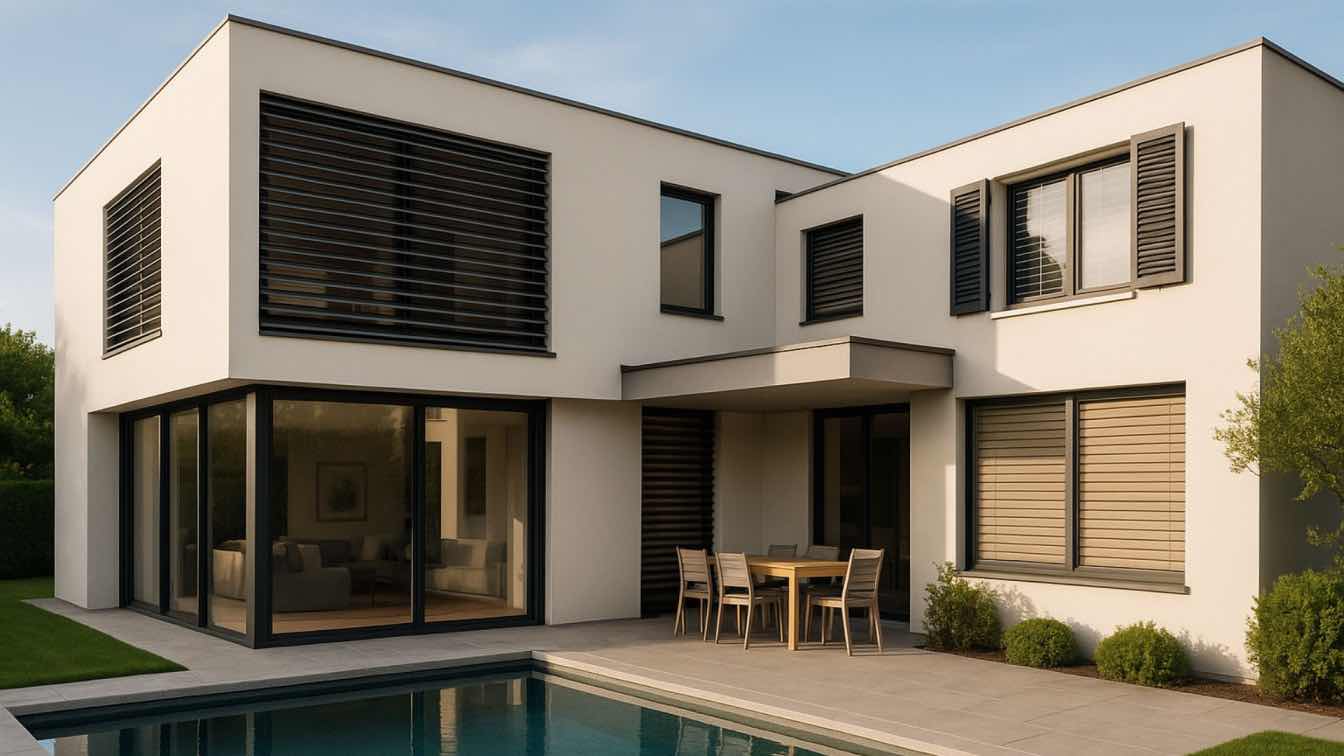When it comes to home renovation and styling, window treatments can be a surprisingly powerful design element. The right blinds can frame a view, soften a harsh room, or pull together an entire aesthetic. But as any homeowner knows, choosing the right style is more than picking a colour or fabric—it’s about finding something that fits your space, personality, and lifestyle.
One of the most common questions we hear? "Should I go modern or traditional with my blinds?" This guide breaks it all down, helping you decide which style suits your home best—or how to mix both like a design pro.
Understanding the Difference
Modern blinds
are known for their sleek lines, minimalism, and innovation. Think clean fabrics, smart functionality, and neutral palettes that pair effortlessly with contemporary homes. These styles tend to blend into the background, highlighting architectural features and modern furnishings.
Traditional blinds
Traditional blinds on the other hand, lean into warmth, texture, and classic detailing. They evoke comfort and timelessness, often incorporating layered treatments, rich finishes, and materials that feel cozy and grounded.
But don't confuse "traditional" with "outdated" or "modern" with "cold." The magic happens when you understand what each style brings to the table and how it complements your space.
Modern Blinds: Clean, Clever, and Contemporary
Why people love them:
- Simple lines and no-fuss operation
- Pairs well with open-plan living and minimalist interiors
- Often integrates with smart-home systems
Common types of modern blinds:
1. Roller Blinds
One of the most versatile and affordable blind types. Available in blockout, sunscreen, or light-filtering fabrics. Great for spaces that need clean lines and easy maintenance.
2. Panel Glide Blinds
Ideal for wide windows or sliding doors, these move horizontally and offer a sleek alternative to vertical blinds.
3. Honeycomb/Cellular Blinds
Energy-efficient, modern-looking, and softly structured. These add a refined texture while maintaining an understated presence.
4. Motorised Blinds
Controlled via remote, app, or smart home systems like Alexa or Google Home. Great for high or hard-to-reach windows and anyone who loves tech-forward living.
Ideal rooms:
- Open-plan living rooms
- Modern kitchens
- Bathrooms with minimalist finishes
- Home offices
Styling tip: Choose neutral or textured fabrics like charcoal, stone, or off-white. Less is more when it comes to modern aesthetics.
Traditional Blinds: Warmth, Texture, and Timeless Appeal
Why people love them:
- Adds softness and character
- Layers beautifully with curtains or valances
- Brings a sense of nostalgia or European charm
Common types of traditional blinds:
1. Roman Blinds
Fabric folds create gentle horizontal pleats. These look stunning in heritage homes or with Hamptons, French provincial, and farmhouse styles.
2. Wooden or Faux Wood Venetians
Timber blinds add warmth, texture, and a handcrafted feel. Perfect for cozy studies, dining rooms, or classic-style living spaces.
3. Vertical Blinds (Textured)
While often used in modern settings, heavier or patterned fabric verticals can lend a traditional look to large spaces.
4. Cafe-Style Blinds
Popular in kitchens or breakfast nooks, especially when paired with gingham or florals for a country-style effect.
Ideal rooms:
- Bedrooms with decorative mouldings
- Dining rooms
- Cottages, villas, and character homes
- Nurseries and cozy reading nooks
Styling tip: Go for rich fabrics like linen blends, velvet, or cotton. Layer with curtains for a luxe, dimensional look.
How to Decide: A Room-by-Room Breakdown
Living Room:
A modern living room with open shelving, stone finishes, and clean-lined furniture might suit roller or honeycomb blinds. But if you’re styling a heritage home or want to create warmth, Roman blinds in a neutral fabric will never go out of fashion.
Kitchen:
Kitchens thrive on functionality. Modern kitchens do well with PVC Venetian or roller blinds for easy cleaning. But if your kitchen is part of a country or coastal home, timber blinds can add character and depth.
Bedroom:
Here, it’s all about comfort and privacy. Roman blinds with blockout lining (traditional) offer a soft, layered look, while blockout roller blinds (modern) are fuss-free and effective.
Bathroom:
Steam and moisture make practicality key. Go modern with aluminium or PVC blinds—faux wood if you want the look without the risk of warping.
Home Office:
Think glare control and clean aesthetics. Modern roller or honeycomb blinds offer both style and performance.
Mixing Modern and Traditional Like a Pro
Who says you have to pick one? Some of the best-designed homes feature a mix of both. Here’s how to make it work:
1. Choose a base tone
Stick with a cohesive palette throughout your home. Whites, soft greys, or sandy tones can help you transition smoothly between styles.
2. Focus on formality
Use traditional blinds like Romans in formal rooms (e.g., dining or guest bedrooms), and lean into modern blinds in high-function areas like kitchens and laundries.
3. Layer with curtains
A blockout roller blind with a sheer curtain? That’s the perfect marriage of modern function and traditional softness.
4. Complement your home’s architecture
A 1920s bungalow will naturally suit traditional treatments, while a new build with floor-to-ceiling windows begs for sleek, modern finishes.
Budget Considerations
Modern blinds often come in at a lower price point, especially when purchased ready-made or online. If you're renovating on a budget, roller blinds or verticals are cost-effective and easy to install.
Traditional blinds like Romans or custom timber Venetians may cost more, especially if you're using premium fabrics or getting them made to measure. But they also tend to add more character and value to classic homes.
Pro tip: You can check Aussie blinds online to compare prices, see fabric swatches, and even use visualiser tools to see how they’ll look in your space.
Sustainability and Efficiency
Modern blinds often come with energy-efficient options. Honeycomb blinds, in particular, help with insulation and reducing power bills. Motorised blinds can be programmed to optimise light and heat, further improving efficiency.
Traditional timber blinds can be sustainably sourced or made from faux wood alternatives, offering a classic look with a conscious edge.
Final Thoughts: It’s About What Feels Right
Your blinds should reflect more than just your interior style—they should support how you live. Are you drawn to clean lines and smart features? Lean into modern. Prefer rich textures and a layered look? Traditional might be your thing.
Or perhaps, like most renovators, you sit somewhere in between. And that’s more than okay.
Because the best homes aren’t styled to match a catalogue. They’re built with intention, layer by layer, until they feel just right for you.
Ready to find your perfect match? Start browsing blinds online and order a few samples—sometimes the right choice becomes clear when you can touch and see it in your space.
And remember: trends come and go. But a home that feels like you? That’s timeless.





